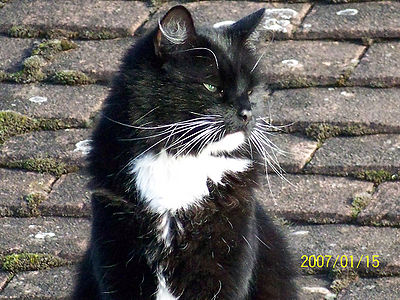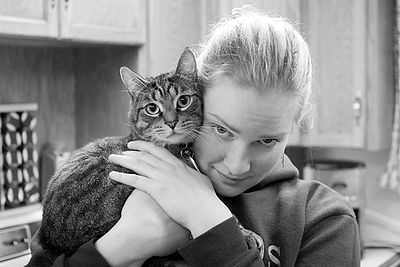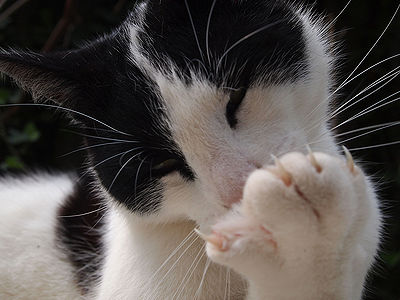A cat’s tail is an extension of the spine. The number of bones called caudal vertebrae, is 19-23, 10% of total number of bones in the cat’s body. A male cat’s tail is about 11 inches long while the female cat’s tail is about 9.9 inches long.
The tail contains muscles, ligaments and tendons which help the cat balance and communicate moods. Nerves extend into the tail from the spinal cord and connect to the large intestine, hind legs, bladder and anus.
If a cat’s tail is pulled, the nerves can be stretched or torn causing intense pain and affecting the cat’s ability to walk.
The tail acts as a counterbalance. For example, when the cat goes left, the tail will move to the right. The cat’s tail is a good indicator of it’s mood too.
A tail swishing quickly back and forth means an angry cat.
A tail held still but with twitching tip shows irritation.
A lowered, fluffed out tail is a sign of fear.
If a female cat holds her tail to one side, it’s an invitation for sex.
A tail lowered and tucked between the legs means the cat is frightened or submissive.
A fluffed up tail held straight out is a signal that the cat is aggressive and may attack.
When the tail is raised and gently curved, the cat is offering a friendly greeting.
A lowered tail curved upward is a sign of a relaxed cat.
The Manx cat has no tail or a bit of a stump. Some cats have kinked tails, particularly Siamese.
There is a story related to kinked tails and Siamese cats. It is said that the Princess of the Royal House of Siam placed her rings on the tail of her Siamese cat when bathing. Because the rings would sometimes slip off, the Princess tied a knot in the cat’s tail to prevent this happening. Of course it’s a cute story but the truth is that kinked tails are a genetic trait.



